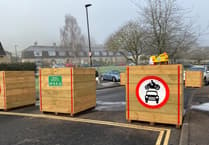This week, one letters column contributor cleared up some facts on radon gas, following a query from last week's column
“
Regarding last week’s query concerning radon gas, it is indeed apparent that a large part of the Midsomer Norton/Radstock area lies over a radon hotspot with the potential for radon gas infiltration being greater than 30%; the same potential that affects large areas of Cornwall.
For those who aren’t familiar with radon, it’s a naturally occurring radioactive, colourless and odourless gas that occurs in rocks and soils and is known to be a significant cause of lung cancer. However, in answer to John Blatchford’s enquiry, the national building regulations require that levels of radon gas are established for all new buildings, extensions and conversions (both residential and non-domestic) to ensure the required protection measures are incorporated, where deemed necessary.
The radon action level is set at 200 Bq/m³ compared with the UK national average of 20 Bq/m³ and some years ago I took up the Council’s offer in conjunction with DEFRA and placed radon detectors in my old, terraced house for the required three-month period. When returned and analysed, these detectors produced a result of 150 Bq/m³ which whilst below the action level, was still considerably much higher than the national average.
Within the workplace environment, the Health and Safety Executive (HSE) place a requirement upon employers to assess and manage radon gas infiltration as part of the raft of regulations that fall within the remit of the Health and Safety at Work Act 1974.
For any readers that may want to obtain further information regarding radon gas, a considerable amount of online information is available from the UK Health Security Agency and Health and Safety Executive. Visiting ukradon.org will also enable you to view their interactive radon map where you can assess the potential radon levels within the vicinity of your own address location.
John Robbins, Midsomer Norton




